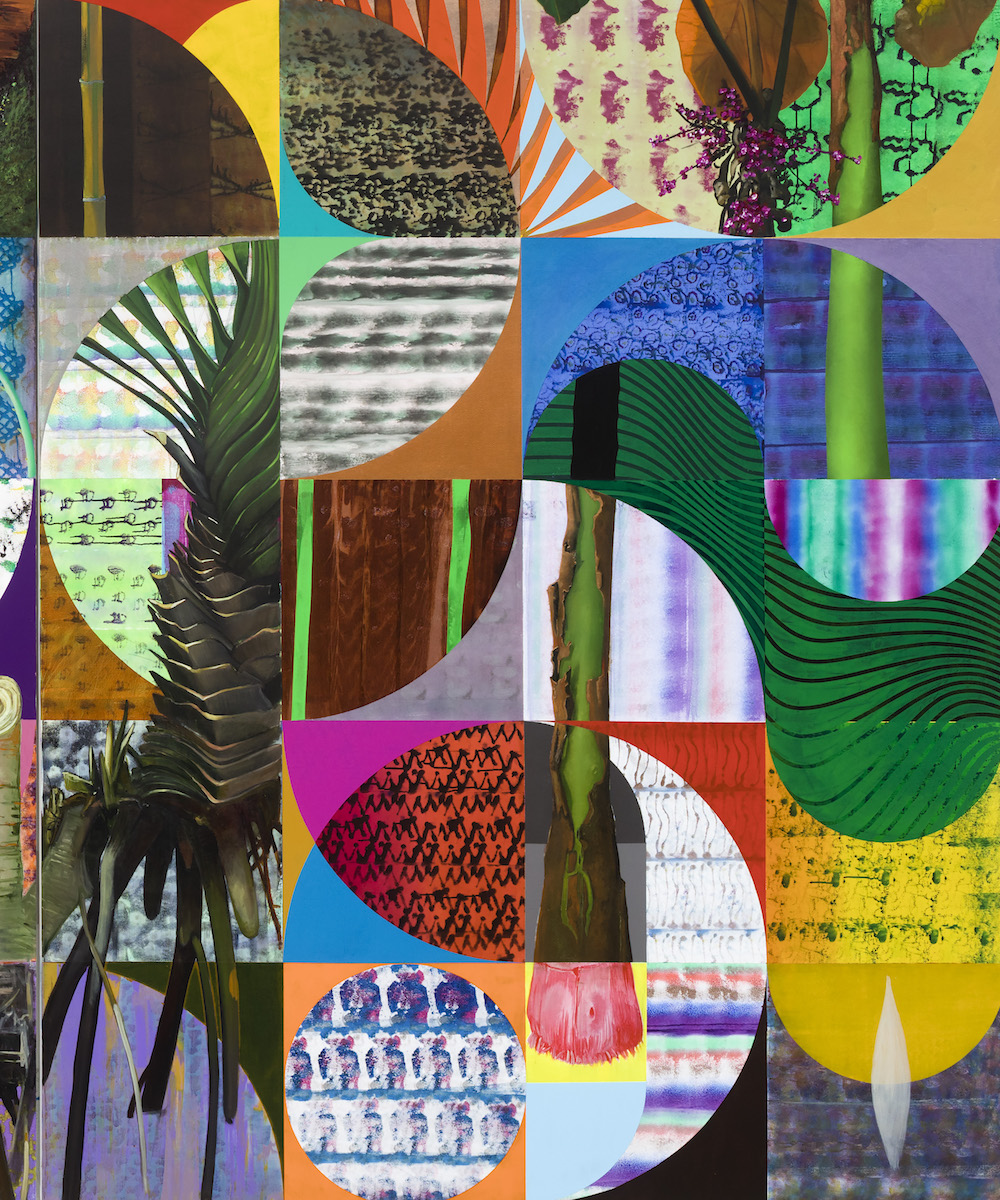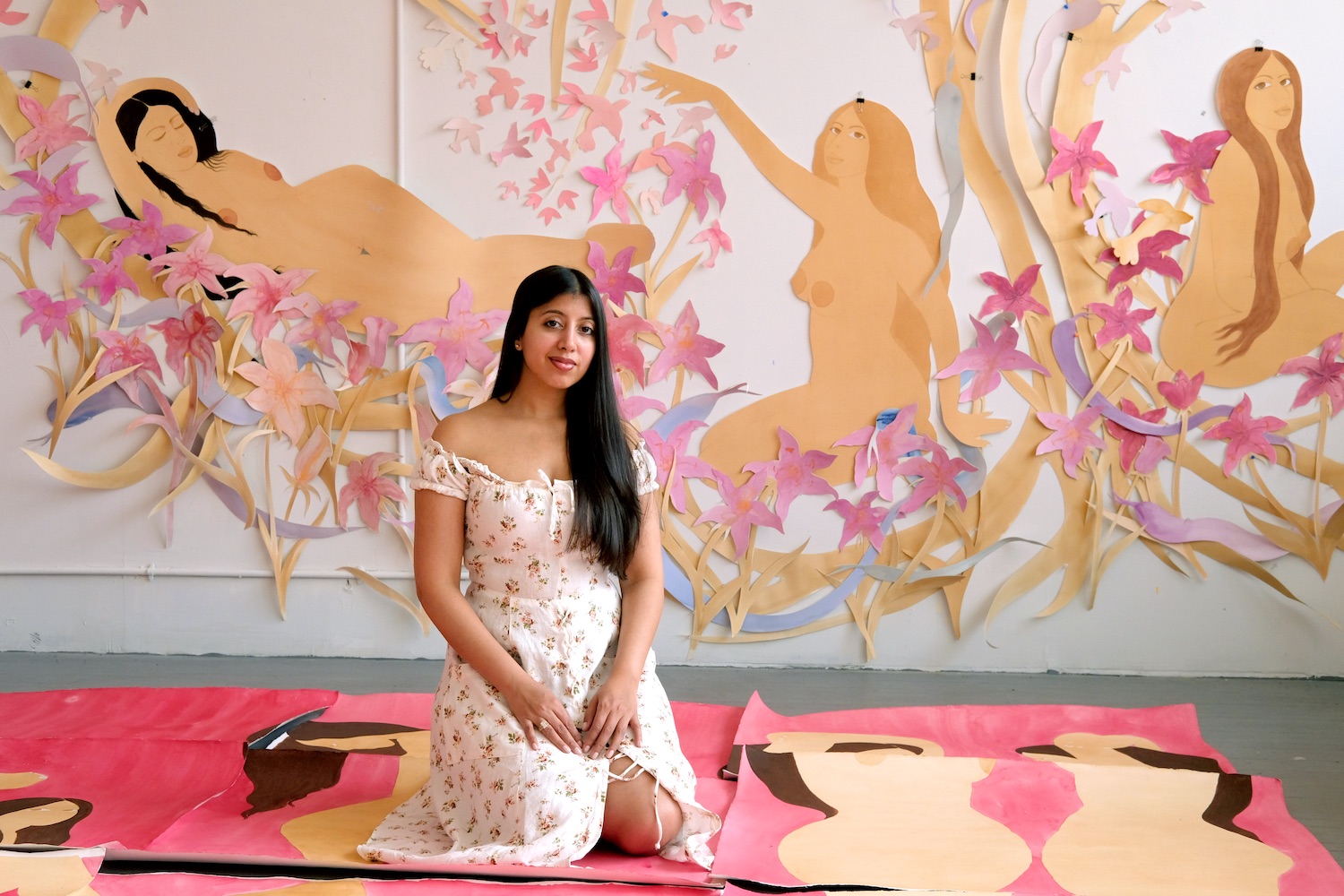Born in São Paulo and living and working in Rio de Janeiro since the 1980s, the artist Luiz Zerbini has, naturally, been influenced in his practice by the magical landscapes of his home country, Brazil. Blending figuration and abstraction, Zerbini’s artworks are often based on a grid infrastructure—faintly reminiscent of Brazilian mosaics and tower block facades—which adds a level of methodic organization to works which otherwise employ a frenetic compilation of organic forms and a vibrant palette.
In 2019, Zerbini was featured in the group exhibition “Trees” at Fondation Cartier in Paris, where the artist’s work became part of an indoor, urban jungle, which underscored imagery of Brazilian modernity with an installation of a life-sized herbarium, a living fig tree, and paintings of the rainforest.
And recently, we saw Zerbini’s work exhibited in a solo presentation entitled “Fire” at London’s Stephen Friedman Gallery. In progress during a time when bodies like the Amazon, California Redwoods, and Australia forests were all aflame at once, the works on view (including a series of monumental canvases) follow the artist’s fascination with humanity’s relationship with nature in and around his home.
To learn more about these presentations, Brazil as a muse, and the role environmental awareness plays in Zerbini’s practice, Whitewall spoke to the artist this past spring.
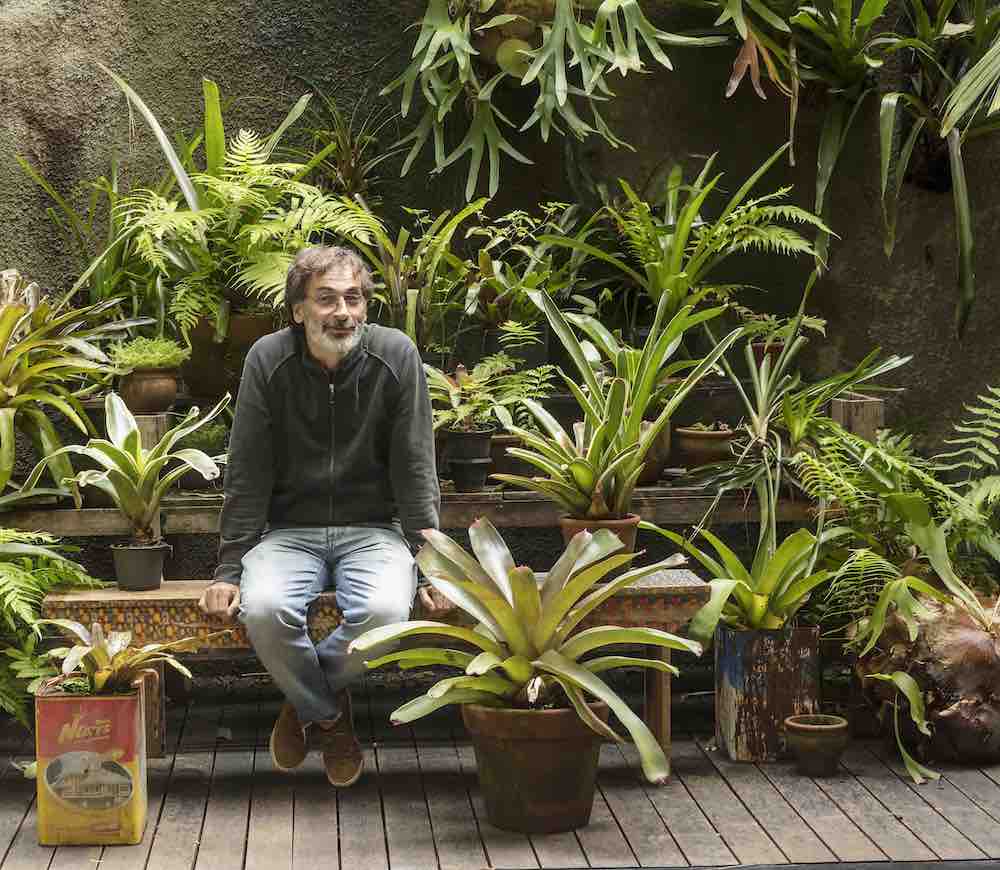
Portrait by Pat Kilgore.
WHITEWALL: Can you tell us what’s on view in your exhibition “Fire” and the starting point for this body of work?
LUIZ ZERBINI: “Fire” shows a group of paintings and monotypes which I produced in the last year. My process is dynamic, full of certainty and contradictions. It is a sequence in progression, and the show is the opportunity to share the place where I am, where I came from, and where I am going.
WW: The title “Fire” came from consideration of the fires happening all over the world while these works were in process. How are you currently looking at environmental responsibility and sustainability in your art?
LZ: I am preparing an exhibition at Museu de Arte de São Paulo (MASP) for next year (2022). I will show a group of historical scene paintings I have made considering other perspectives. I painted two large-format canvases, about illegal mining in indigenous lands. One of them depicts the Haximu Massacre, an episode that occurred in 1993, when illegal miners killed 16 people, all of them women and children, inside the Yanomami indigenous reserve in Roraima.
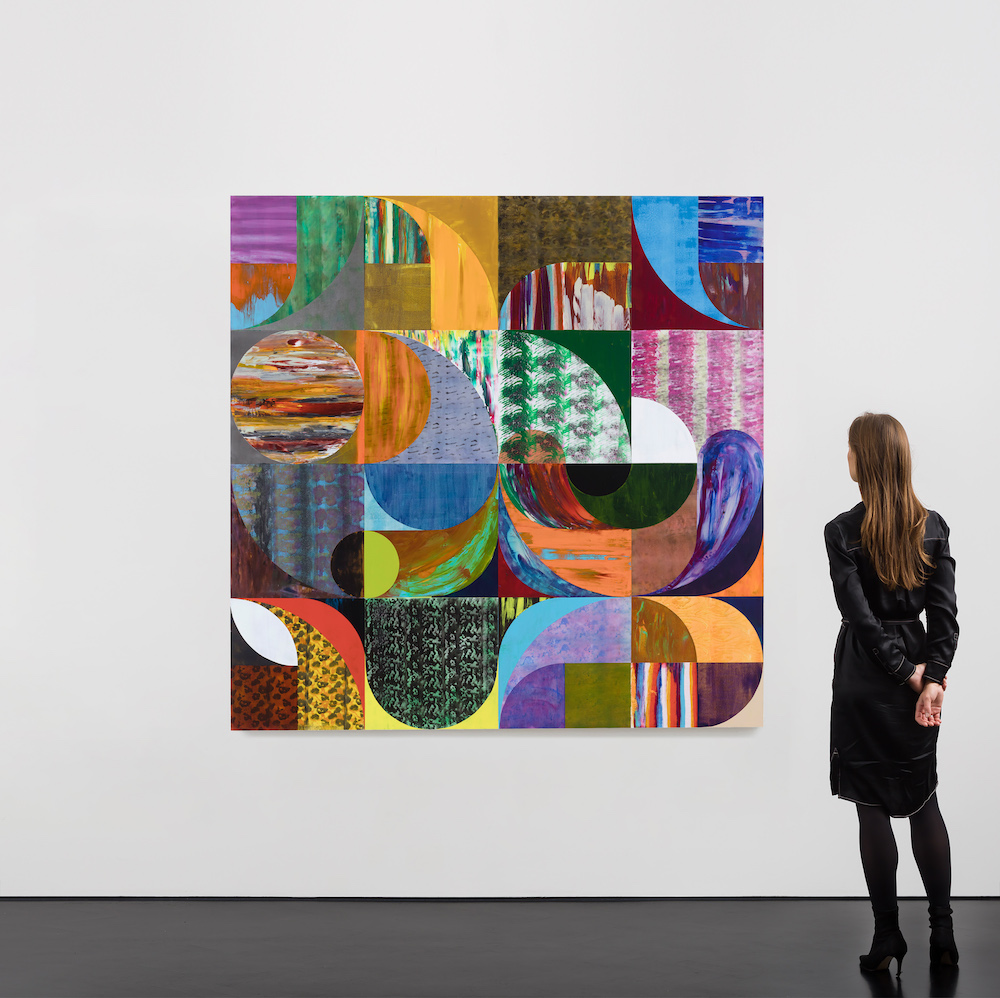
Luiz Zerbini, “Diagrama de um tempo insano III,” 2020, acrylic on canvas, 78 3/4 x 78 3/4in, photo by Pat Kilgore, copyright Luiz Zerbini, courtesy of the artist and Stephen Friedman Gallery, London.
This is a historical fact that has not yet reached its end, and is directly linked to the absurd environmental policy that the current government practices, supporting gold mining and not recognizing the constitutional rights of the indigenous people. It is them and their cultures that keep the forest standing.
WW: Your practice draws imagery and inspiration from Rio de Janeiro and the landscapes of Brazil. Having lived in Rio since the early 1980s, how would you say that the city’s evolution has impacted your work over the years?
LZ: My city is situated in a utopian world and exists in a suspended, static time. The landscape that I paint has always existed. It existed before men were born and will perpetuate itself beyond their disappearance. It is an eternal dream where everything coexists in harmony. This beauty and plurality intoxicates me to the point of blinding me to all the rest.
The transformation is silent, almost imperceptible. I honestly think that I was so immersed in this beautiful and crazy dream during the last 40 years that I didn’t notice the real transformations that the city went through. Everything is more crowded, the queues are longer, the traffic is worse, and the sea is still beautiful but dirty. The impact of this change is slow. Each new thing that I learn, that I find on the street in my path and keep with me, becomes part of the construction of this landscape.
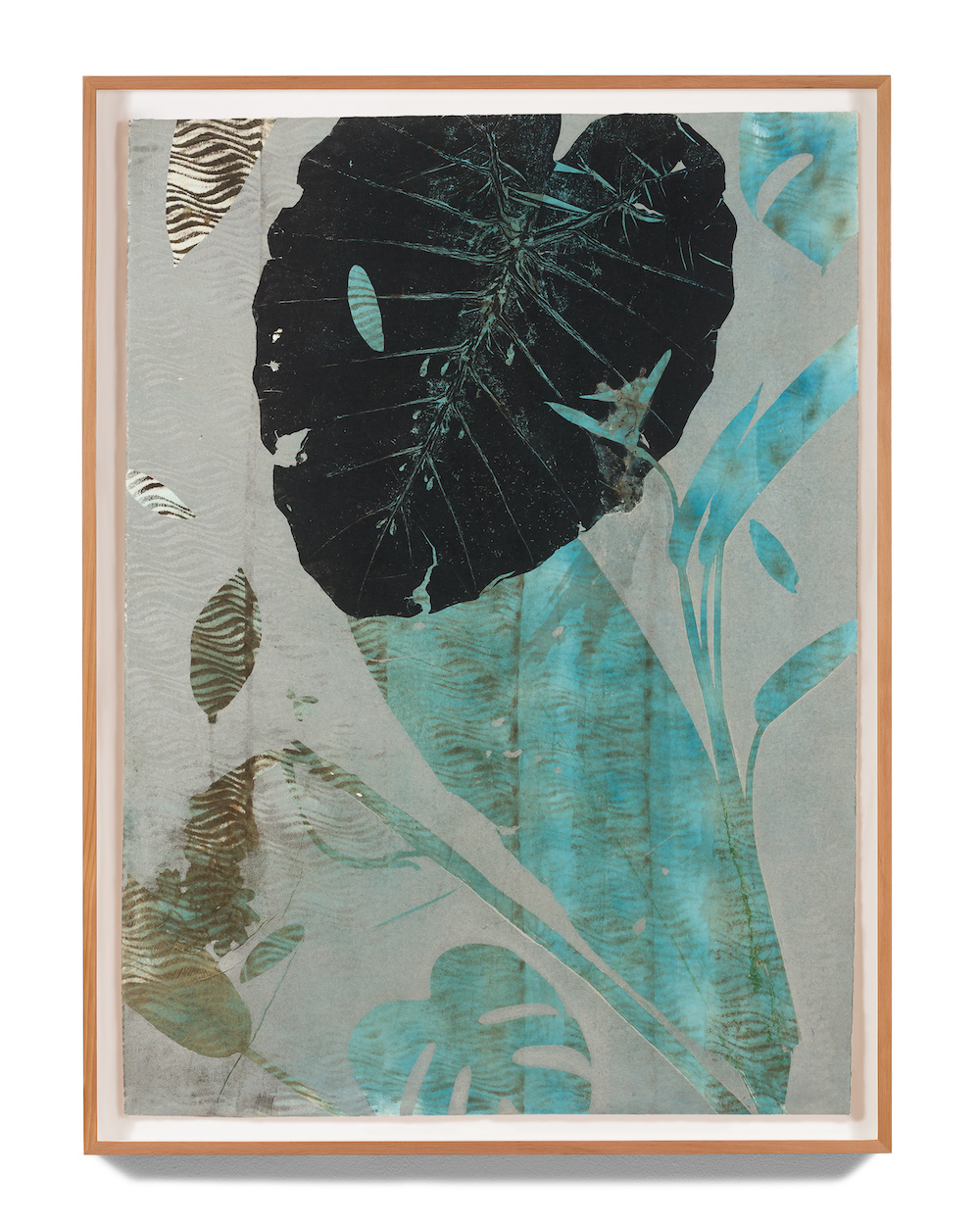
Luiz Zerbini, “Camuflagem Turquesa,” 2020, acrylic and oil on Hahnemühle paper, 42 1/8 x 31 1/2 inches, photo by Pat Kilgore, copyright Luiz Zerbini, courtesy of the artist and Stephen Friedman Gallery, London.
WW: When did you first begin utilizing the grid structure within your painted works?
LZ: I think the horizon line was the beginning of what would become a grid in the future. A horizontal section dividing the plane in two, sky and earth. Then, on the facade of the buildings, in the modernist architecture of Le Corbusier and Niemeyer, I recognized the grid and simplified its representation until it became a geometric abstraction that was detached from the representation of the reality. Today I feel so impregnated by this order that the entire organization of the space in my work, including the three-dimensional installations, goes through the grid.
WW: You were featured in the 2019 group exhibition “Trees” at Fondation Cartier. Can you tell us about your work in relation to the greater context of the show? How was it to see your paintings interacting with such an energetic installation?
LZ: We were already working with the possibility of having an exhibition at the Fondation because I had done an installation called “Dreaming Awake” in Marres – House of Contemporary Culture (Maastricht) in 2018, made with natural tropical trees and plants. I thought that the space of Fondation Cartier’s building was perfect for an installation with plants and trees, because of the height and the incidence of light. This project ended up not happening.
A few years later I was introduced to Bruce Albert, who I knew by name, through the book The Falling Sky, written in partnership with the indigenous leader Davi Kopenawa Yanomami. He then told me that he was working on the idea of making an exhibition about trees and so that old installation idea of mine turned into an occupation where paintings coexisted with other works in the same space. This exhibition gave me the opportunity to meet new people, who worked in areas related to science and botany, besides the artists of course. I have always liked the idea that art and science go hand in hand.
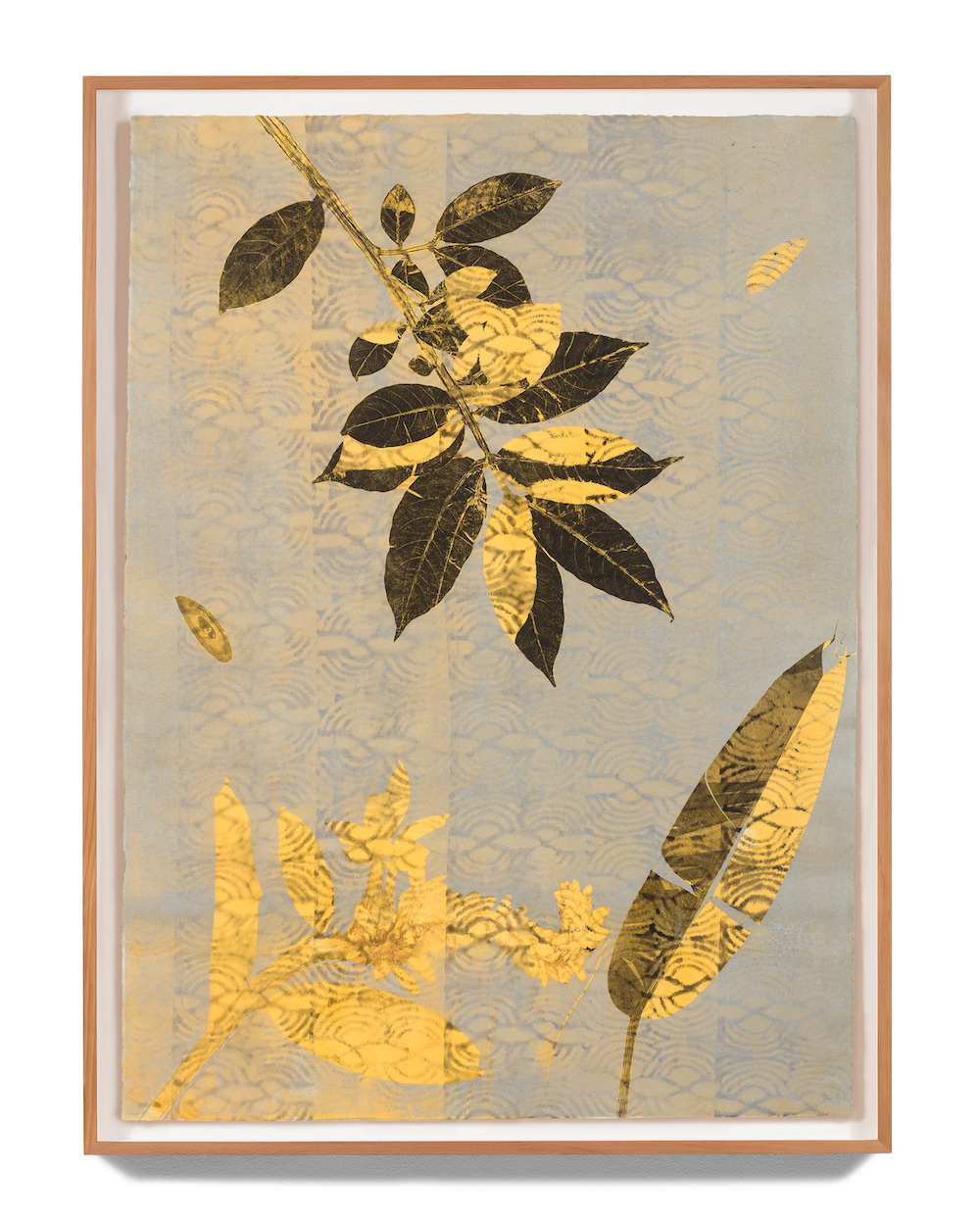
Luiz Zerbini, “Camuflagem Prata,” 2020, acrylic and oil on Hahnemühle paper, 42 1/8 x 31 1/2in, photo by Pat Kilgore, copyright Luiz Zerbini, courtesy of the artist and Stephen Friedman Gallery, London.
WW: You’ve said that you treat a painting as an oracle that gives you everything you need to keep going. What goes into the process of hearing what a painting has to say?
LZ: The painting gives you everything you need to know, shows you the ways, suggests images, ideas, thoughts, but you need to be patient. You need to be open to see and courageous to accept and try. If you act, the answer will be a question and so on.
If you have the chance to sit in front of one of my paintings for a long time, looking at the small details, you would certainly have better answers than this one. Ask everything you want to know and wait. The thing is that it could take time, sometimes months. The answer will come when you never expect it. Maybe during the night when you lie down on your bed or maybe when you bite a madeleine biscuit.
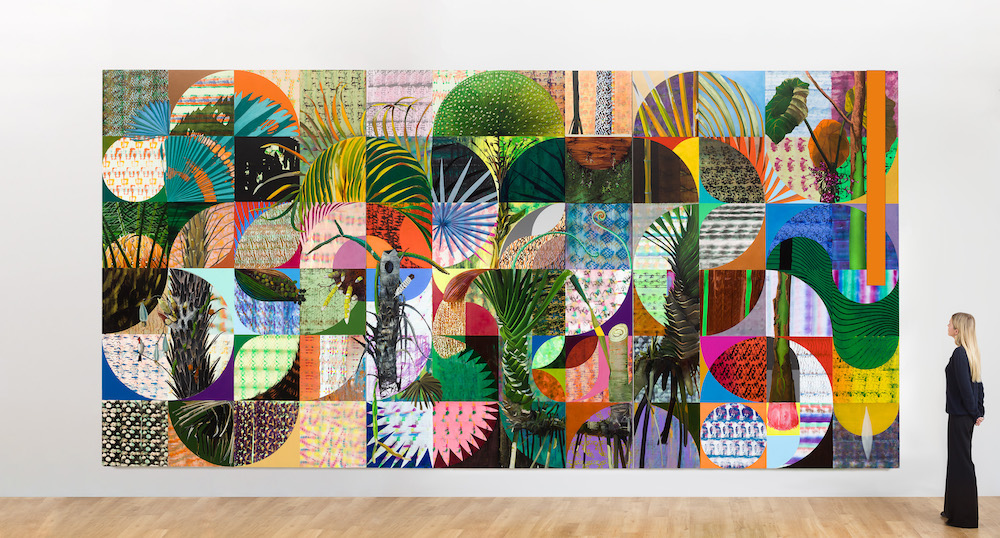
Luiz Zerbini, “Happiness Beyond Paradise,” 2020, acrylic on canvas, 118 1/8 x 236 1/4in, photo by Pat Kilgore, copyright Luiz Zerbini, courtesy of the artist and Stephen Friedman Gallery, London.


